Table of contents
- What is a 1031 Exchange?
- Who Should Consider a 1031 Exchange?
- Understanding the Basics of 1031 Exchanges
- Why Use a 1031 Exchange?
- Types of 1031 Exchanges
- Step-by-Step Process of a 1031 Exchange
- Common Pitfalls to Avoid
- Wrapping Up our 1031 Exchange Guide for Dummies
- Ready to Get Started on Your 1031 Exchange for Dummies
When you’re diving into the world of real estate investing, you’ll quickly realize that taxes can eat into your profits. But did you know that you can defer those taxes and reinvest your gains by using a strategy called a 1031 exchange? If you’ve never heard of it, or you’re not sure how it works, don’t worry – our 1031 exchange guide for dummies is for you. We’ll break down everything you need to know about 1031 exchanges, so you can make informed decisions and build your real estate portfolio strategically.
What is a 1031 Exchange?
A 1031 exchange, also known as a “like-kind exchange,” is a tax-deferral strategy used by real estate investors. It allows you to defer paying capital gains taxes on the sale of an investment property as long as you reinvest the proceeds into another like-kind property. The concept is simple: you sell one property and roll the gains into a new property, deferring the tax bill to a later date.
The goal of a 1031 exchange is to keep your money working for you rather than handing over a portion of your profits to the IRS. By using this tax deferral, you have more capital available to reinvest in your next property, potentially allowing you to upgrade to a larger or more lucrative investment.
Who Should Consider a 1031 Exchange?
A 1031 exchange is a powerful tool for any real estate investor who wants to grow their portfolio, whether you’re just starting out or you’ve been in the game for a while. It’s especially valuable for investors who are looking to move up to bigger properties, diversify their holdings, or even reposition their assets as they approach retirement. For beginner investors, a 1031 exchange can be an effective way to scale up your investments more quickly. Rather than selling a property and losing a significant portion of your gains to taxes, you can use those untaxed dollars to purchase your next investment property, allowing you to grow your wealth faster over time.
Understanding the Basics of 1031 Exchanges
What is the IRS Section 1031?
Section 1031 of the IRS tax code allows investors to defer capital gains taxes when they sell an investment property, as long as they reinvest the proceeds in another property of “like-kind.” The key here is that you’re not avoiding taxes – you’re just deferring them to a later date. As long as you keep reinvesting your gains through subsequent 1031 exchanges, you won’t have to pay those taxes until you eventually sell a property without reinvesting in another one.
The beauty of this strategy is that it allows you to continuously upgrade or diversify your real estate holdings without taking a tax hit every time you make a sale. Over time, this can result in significant tax savings and a faster accumulation of wealth.
What Qualifies as ‘Like-Kind’ Property?
The term “like-kind” can be a bit misleading because it doesn’t mean you have to exchange one specific type of property for another. In fact, the IRS has a broad interpretation of what qualifies as like-kind. Any real property held for investment or business purposes generally qualifies as like-kind, meaning you could exchange a single-family rental home for a commercial building, an apartment complex, or even raw land.
The key is that both the property you’re selling and the one you’re buying must be used for investment purposes. You can’t, for example, exchange your personal residence for an investment property – that wouldn’t qualify.
The Importance of Timing
Timing is everything when it comes to 1031 exchanges. The IRS has set strict deadlines that must be followed to complete a valid exchange. There are two critical timeframes to be aware of:
- 45-Day Identification Period: After selling your property, you have 45 days to identify potential replacement properties. You can identify up to three properties, regardless of their value, or more than three properties if they meet specific value criteria.
- 180-Day Closing Period: From the date you sell your property, you have 180 days to close on the purchase of your replacement property. This includes the time it takes to negotiate contracts, conduct due diligence, and finalize the transaction.
Missing either of these deadlines will disqualify your exchange, and you’ll be responsible for paying capital gains taxes on the sale of your property. That’s why careful planning and working with experienced professionals is essential to executing a successful 1031 exchange.
Why Use a 1031 Exchange?
Tax Deferral Benefits
The primary reason investors use 1031 exchanges is to defer capital gains taxes. When you sell an investment property, the IRS usually requires you to pay taxes on the profit you made from the sale, which can be as high as 20% depending on your tax bracket. But with a 1031 exchange, you can defer those taxes by rolling the proceeds into a new investment property.
This deferral allows you to reinvest the full amount of your proceeds, giving you more purchasing power and potentially enabling you to buy a larger or more valuable property than you could have if you had to pay taxes upfront. Over time, this can lead to compounding returns, as you’re continually reinvesting your gains rather than paying them out in taxes.
Opportunity to Grow Your Portfolio
Using a 1031 exchange is one of the best ways to grow your real estate portfolio quickly. By deferring taxes, you can use the full value of your proceeds to purchase bigger or more valuable properties, which can generate more rental income or appreciate at a faster rate than smaller properties.
If you’re looking to upgrade your investment portfolio, a 1031 exchange can help you move from smaller, lower-value properties to larger, more lucrative investments. Whether you’re exchanging a single-family rental for a multi-family apartment complex or moving from residential to commercial real estate, the tax savings from a 1031 exchange can give you the financial boost you need to make that transition.
Portfolio Diversification
Another benefit of 1031 exchanges is the ability to diversify your portfolio. Instead of holding all your investments in one type of property or one geographic location, you can use 1031 exchanges to spread your investments across different property types and markets. This diversification can help protect you from market downturns in a particular area or sector of the real estate market.
For example, if you currently own several residential rental properties, you could use a 1031 exchange to trade one of them for a commercial property, such as an office building or retail space. This diversification can provide you with a more stable income stream and help reduce your overall investment risk.
Types of 1031 Exchanges
Simultaneous Exchange
A simultaneous exchange occurs when you sell your relinquished property and purchase your replacement property on the same day. This is the simplest type of exchange from a technical standpoint, but it’s also the least common because it requires both transactions to be timed perfectly.
In a simultaneous exchange, the sale of your old property and the purchase of your new property happen in one coordinated transaction. However, this can be difficult to pull off in practice, as it requires all parties involved – buyers, sellers, lenders, and intermediaries – to work together seamlessly.
Delayed Exchange
The delayed exchange (or deferred exchange) is by far the most common type of 1031 exchange. In this scenario, you sell your old property first and then have up to 45 days to identify potential replacement properties and 180 days to close on one of them.
This type of exchange gives you more flexibility than a simultaneous exchange, as it allows you to sell your property without having to immediately purchase a replacement. The 45-day identification period gives you time to search for suitable replacement properties, while the 180-day closing period provides ample time to complete the transaction.
Reverse Exchange
A reverse exchange is the opposite of a delayed exchange. In this scenario, you purchase the replacement property first and then have up to 180 days to sell your old property. This can be a great option if you find a deal on your replacement property before you’ve sold your current one, but it does require more upfront capital since you’ll need to finance the purchase of the replacement property before receiving the proceeds from the sale of your old property.
Reverse exchanges are more complex and typically require more involvement from your Qualified Intermediary (QI) to ensure that the exchange is executed correctly.
Improvement Exchange
An improvement exchange allows you to use some of the proceeds from the sale of your old property to make improvements or renovations on the replacement property. This is particularly useful if you’re purchasing a property that needs significant repairs or upgrades.
The key to an improvement exchange is that the improvements must be completed within the 180-day exchange period, and the total value of the improvements must be equal to or greater than the value of the relinquished property. This type of exchange can be more challenging due to the tight timelines for completing improvements, but it can also provide significant tax advantages.
Step-by-Step Process of a 1031 Exchange
Step 1: Hire a Qualified Intermediary (QI)
The first step in any 1031 exchange is to hire a Qualified Intermediary (QI). The IRS requires that a QI hold the proceeds from your sale during the exchange period to prevent you from having “constructive receipt” of the funds, which would disqualify the exchange. The QI’s role is to facilitate the entire process, ensuring that all IRS rules and regulations are followed.
It’s essential to choose a reputable and experienced QI who understands the complexities of 1031 exchanges. They’ll help you navigate the process, keep track of important deadlines, and ensure that the exchange is executed correctly. You must sign the agreements generated by the QI prior to selling your property.
Step 2: Sell the Relinquished Property
Your next step is to sell your old property. The proceeds from the sale will go directly to your QI, who will hold the funds in escrow until you’re ready to purchase your new property. You won’t have access to the proceeds during this time, as that would disqualify the exchange.
Step 3: Identify the Replacement Property
Once your relinquished property is sold, you have 45 days to identify potential replacement properties. You can identify up to three properties regardless of their value, or more than three if they meet specific valuation criteria. It’s essential to begin the identification process early, so you don’t run into trouble meeting the deadline.
Step 4: Purchase the Replacement Property
Finally, you’ll need to close on the purchase of your replacement property within 180 days of selling your relinquished property. The QI will use the funds from the sale of your old property to complete the purchase of your new property. Once the transaction is complete, your 1031 exchange is considered successful, and you’ve successfully deferred your capital gains taxes.
Common Pitfalls to Avoid
Missing Deadlines
The IRS deadlines for 1031 exchanges are strict, and missing them will disqualify your exchange. It’s essential to be mindful of both the 45-day identification period and the 180-day closing period to ensure that your exchange remains valid. Failing to meet these deadlines can result in a hefty tax bill, so it’s important to stay organized and plan your exchange carefully.
Incorrectly Identifying Replacement Property
When identifying your replacement properties, it’s crucial to ensure that they qualify as like-kind under IRS rules. Failure to correctly identify your properties can disqualify your exchange, so make sure you’re working with a QI who understands the IRS guidelines and can help you avoid this common mistake.
Choosing the Wrong Qualified Intermediary
Not all Qualified Intermediaries are created equal, so it’s essential to do your homework when selecting one. Choose an experienced QI who understands the intricacies of 1031 exchanges and has a track record of successfully completing exchanges for other clients. Working with a knowledgeable QI can make the difference between a smooth transaction and one that falls apart.
Wrapping Up our 1031 Exchange Guide for Dummies
A 1031 exchange is an excellent strategy for real estate investors looking to grow their portfolio, diversify their investments, and defer capital gains taxes. By following the IRS rules for 1031 exchanges and working with experienced professionals, you can leverage the power of tax deferral to build wealth more quickly and efficiently.
If you’re thinking about doing a 1031 exchange, it’s essential to plan ahead, stay organized, and work with a reputable Qualified Intermediary to ensure the process goes smoothly. With the right approach, you’ll be well on your way to building a successful and diversified real estate portfolio.
Ready to Get Started on Your 1031 Exchange for Dummies
Have more questions about 1031 exchanges? Feel free to reach out! Whether you’re just getting started or looking for more advanced strategies, we’re here to help you make the most of your real estate investments.

Can I Do a 1031 Exchange When Downsizing? Yes, But There’s a Catch

Top 6 Misconceptions About 1031 Exchanges: Separating Fact from Fiction



